
The Divorcée is an odd film.
To the eyes of a modern viewer (at least the cinema-seasoned eyes of this modern viewer), the 1930 M-G-M Norma Shearer vehicle, directed by Robert Z. Leonard, comes across as both shockingly bold and, on first viewing, annoyingly stilted and stagey. I’ll fess up: I did squirm at the oh-so-sophisticated depiction of divorce among the upper classes—where there’s no financial consequences, children, or overwhelming familial disapproval to make the rupture messy. This a fantasy divorce, make no mistake, in which virtually nothing peels away at the veneer of glamour, lacquered thick over the whole affair.

On the other hand, I cannot quite choke back the glee when Norma Shearer informs her dismissive, one-time-philanderer hubby, “I’ve balanced our accounts.” Is there a wittier way of informing one’s, ahem, better half that you’ve attained sweet, sweet revenge?

Norma gave us her matter-of-fact opinion on sex in motion pictures in this interview from the 30s.
I swoon at the glamour of Norma’s outfits by Adrian. Whether she’s a good girl or a girl behaving badly, career woman Norma parades around in some of the most to-die-for suits and evening gowns I’ve ever drooled over.

Best of all, she barely dips her toe into vamp territory. We understand that she’s neither a home-wrecker nor a Gothic man-eater, a variation on the succubus. On the contrary, she’s just a sharp lady who wants to have a little fun. And look damn good while doing it.
Shearer won an Oscar for her performance—but she had to fight to get the role. Her husband, Irving Thalberg, head of production at M-G-M, didn’t think she could handle the role. He worried it would eat away at her star image and her popularity. It took a photo shoot that Norma arranged of herself in steamy pre-Code lingerie to prove otherwise. Irving caved to her demands.
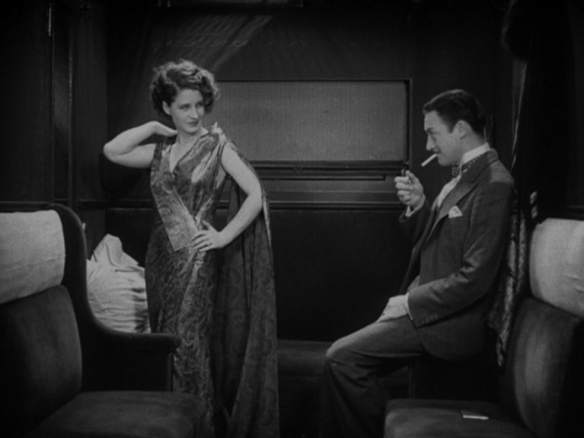
And I must acknowledge that The Divorcée throws quite a few hard punches. Ones that send me reeling, that’s for sure. (Oh, and there are spoilers in this post. If you want to bail out now, I’ll let you.)
So, how are we to evaluate a film like this? One that feels tiresomely backwards—yet looks strikingly forwards? It’s New Years, so I think I have some time to contemplate this Janus-faced creation. In particular, I want to ask the question that the movie seems to cling to: should old acquaintance be forgot? Only, instead of talking about ex-husbands, I want to ask that question about this movie and give a few reasons why, despite a few mawkish angles, The Divorcée deserves to be remembered.

First off, the title intrigues me. No surprises there. Somebody’s getting divorced! The title already announces a separation, so we, the viewers, know that the wooing, cooing couple we see in the opening scenes, Norma and Chester Morris, is going to end up splitting. But how? That’s suspense, right there. And some rather refined irony!
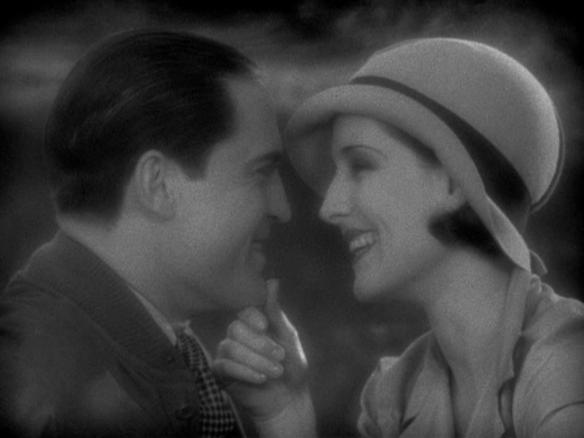
Don’t get too attached to this couple!
With jazzy credits music and a bunch of people giggling in a country house, the film’s opening lures you in with the promise of a witty marital sex comedy (of the Private Lives ilk) then steers you right into ugly drama. The movie begins with a blithe little party among friends in the countryside. We get a rather ordinary love quadrangle: Jerry loves Ted, but so does Paul—even though Dorothy loves Paul. So, when Paul hears that Jerry is going to marry Ted. He doesn’t take it so well.
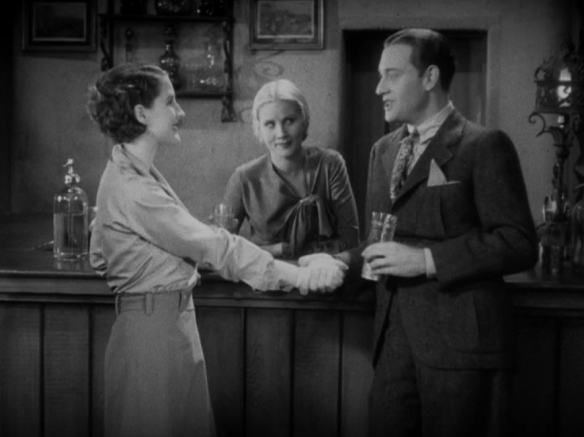
He gets drunk, drives off the road, and the accident smashes up Dorothy’s face.


Talk about going from zero to sixty! The scene made my jaw drop. The expressionistic angles of the crash, the sense of loss and irrevocable damage, the shrill shrieks of Dorothy’s sister as she cries for revenge over her sister’s disfigured body.

In a split second, The Divorcée plunges us into darkness and we’re still gasping for breath when the light comes.

Right from that nasty car-crash scene, we go to a chapel where Jerry and Ted are going to be joined in matrimony. Movie weddings often bubble over with joy—or at the very least hijinks—but at The Divorcée’s doomed wedding, the sheer inauspiciousness of it all virtually whacks you over the head.

Sure, the bride blushes and the groom smiles, but something’s not right. We’re all too shaken—and full of presentiments—to bask in the joy.

There’s a very significant dissolve from the priest reciting the service to this shot of the bride and groom taking their vows. Notice how abstracted it is—no heads, no personality. It’s a picture of Marriage, not of our marriage, not a union between two living, breathing people. It reminds me of a glib Victorian illustration.

And as if that uncomfortably headless shot wasn’t irony enough, another dissolve transports us to another marriage—the atonement marriage of Paul and Dorothy, who wears bandages in place of orange blossoms and a veil, as she reclines, mutilated for life, in a hospital bed. The Divorcée equates these two weddings and prods us to think hard about the apparent chasm between the dream wedding and the nightmarish one—because, in point of fact, they’re not so different.

Hands actually play a very important part in this film. Once Jerry separates from her husband and embarks on a series of affairs, we see them transpire in rapid succession through a bunch of shots of hands meeting over tables.


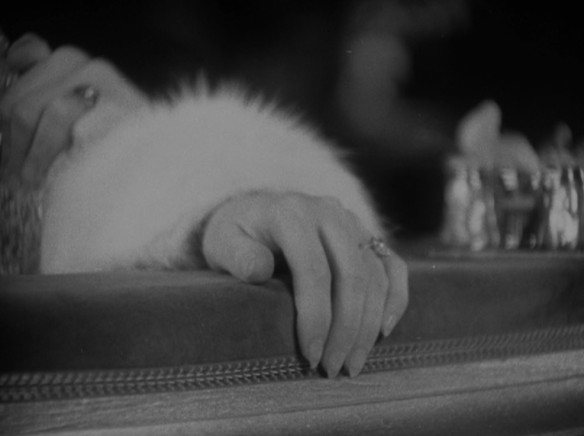
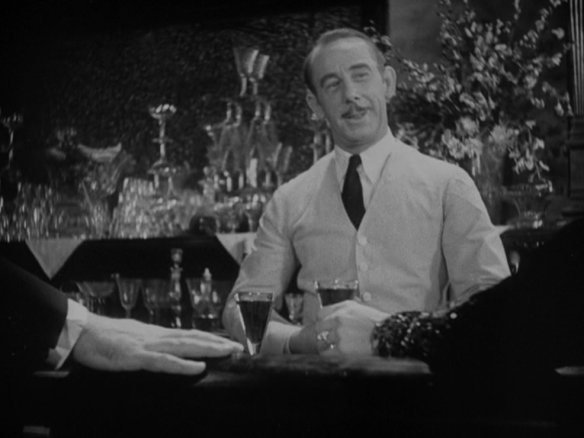
I love this clever montage for its acidly funny encapsulation of relationships. I’d also point out that the lack of faces allows the viewer to put herself in Jerry’s place and experience the vicarious rush of her lusty divorced life. But, most important, the sequence reminds me of Jerry’s and Paul’s weddings—and not just in a simple “that was right, this is wrong” kind of way.
On the contrary, I think all this hand-play encourages us to see both extreme forms of relationship—lifelong commitment and casual sex—as equally dangerous if undertaken without thought…when you leave your head out of the picture.
Living in the moment is dangerous, The Divorcée tells us, because every moment you’re bargaining with the rest of your life, even when you’re not vowing “ ’til death do us part.”

The pleasure-haze of an addled brain—a kaleidoscope of good times.
We see this truth alluded to by the motif of drunken mistakes in this film: Paul’s accident, Ted’s infidelity, and, the most carefully portrayed, Jerry’s drunken affair with Don, who was the best man at her wedding. She learned a few hours ago that her husband cheated on her with a woman who “didn’t mean a thing” to him. But, unsurprisingly, that doesn’t make her feel better.

So she goes out drinking, and we savor a cloudy, loud nightclub as a tracking shot jerks dizzily over to her table where we see written across Norma Shearer’s face a look of blank, despairing stupefaction. All the festivities are lost on her.



Then Don leans towards her and in that close framing, we can practically feel their breath and smell the alcohol on it. She smiles—it feels nice to be appreciated.


Without a line of dialogue, this scene nails the dim, sleepy, assault-on-the-senses ambiance of the situation, which could’ve felt contrived. It’s almost as though we’re watching someone’s fuzzy memory replay of what happened the night before.
So they go back to his place.

As Don suggestively strokes Jerry’s fur coat, the soon-to-be-adulteress looks almost right at us, as if defying us to judge her, to think that we’d do any different in her place.
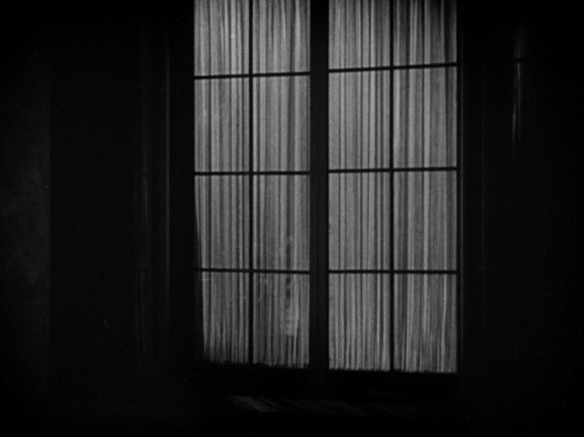

Curtains close. Lights go out. Sex makes for the best ellipses, doesn’t it?
Even nowadays, I can’t think of too many movie women who get their bedroom revenge so quickly. I can’t think of any who make the walk of shame look as good as Norma does. But again, it’s hard to congratulate this movie. What’s the take-away message? That women should do as they like? Or that women are just as bad as men?

Perhaps Norma’s Jerry says it best when she dismisses this kind of broadly gendered talk:
Oh, Ted, don’t let’s talk about men and women. They do all sorts of things. We’ve got to live our own life, dear. There’s so much of it ahead.
The Divorcée serves up a story about individual consequences that aims to look at mature situations. It’s not the clarion call of a sexual revolution. It doesn’t need to be, though. And I refuse to fault the movie for not being one. Even if I do get a little miffed at its contrivances, I can see the ways in which this 1930 sensation still echoes through to today.
As Don, Robert Montgomery dances his way through a performance so likable, yet loose of morals that you feel like he was born to provide consoling vengeance. He’s nice, handsome, rich, smooth, witty—and totally no-strings-attached. They could package him up in cellophane and sell him at Rebounds-Are-Us.

I adore how fun and non-evil he is as the cheerful “other man.” Especially when, years later, he runs into Jerry’s husband (who has no idea Don slept with Jerry) and talks about Jerry’s mysterious rebound guy. “What would you do if you ever found him,” asks Don. “I’d kill him,” Ted replies. The look on Montgomery’s face is priceless.
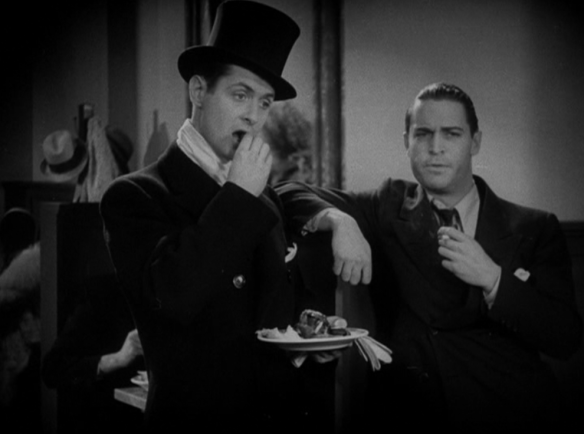
He’s so sweetly caddish that you can also easily trace his descendants in the sitcom, rom-com lineage, including Patrick from Stephen Moffat’s top-notch Coupling and Barney from How I Met Your Mother. (Yes, yes, I watch that stuff too!) Don is still with us, my friend!

The New Year’s reunion at the end of this movie also, I daresay, inspired the conclusion to When Harry Met Sally. But, it’s a lot more problematic since, in the end, Jerry finds her ex and vows to rebuilt their life together. Lots of people would argue that this ending is lame and conservative—making an otherwise scandalous Pre-Code film palatable to a crowd of morality thumpers ready to knock down the studio doors. However, I would argue something different.


As Jerry kisses her ex-hubby and “Auld Lang Syne” swells on the soundtrack, we get a vaguely happy feeling, but what’s done cannot be undone. These two adults recognize this—which is why their marriage stands a chance now. They’re people who’ve seen more of the world, enough to know that actions have repercussions. Even Jerry’s insistence that “all the world gets a fresh start,” sounds plaintive and a trifle reserved. And that’s why, with broken illusions, they can embrace as the lights go black.

Genuine bitterness: Ted knocks over a wedding cake when he discovers that Jerry’s paid him in kind.
It’s no accident that, at the very beginning of the movie Jerry and Ted were acting out a parody of Romeo and Juliet, Shakespeare’s most clueless and immature lovers.

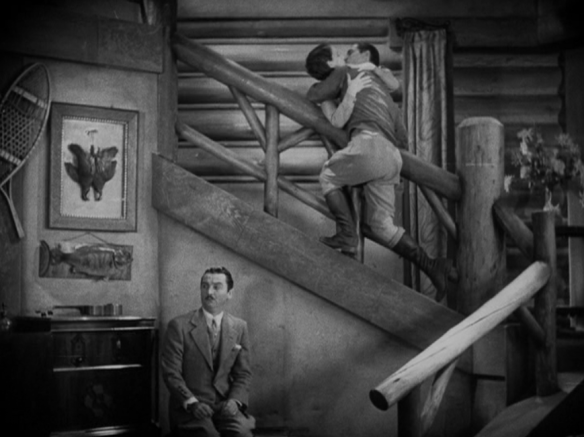


When I was in seventh grade and first read Romeo and Juliet, I didn’t like it one bit. I thought it was mushy and dumb. It’s taken me many, many years to come ’round and see it as a delicate exposé of teenage romanticism—the kind of steam-heated, fast-expiring passion that is so very tragic, not just because it makes people do tragic things, but because if those same people had waited one more week they probably wouldn’t have even remembered the caprice.
Not looking forward is pretty stupid. That’s what the characters in the movie do at the beginning. They marry without knowing much about life. They can’t see past some nebulous notion of “forever.”
But not looking back is even worse. The past returns in a tangible and frightening form in The Divorcée when Jerry gets involved again with Paul who proposes to divorce his disfigured wife (there’s a keeper!) to marry her. Jerry is waiting for Paul in her apartment one day when a knock comes at the door. A woman wearing a thick black veil stands there—and the camera even pivots almost imperceptibly to heighten the unease of this apparition.


Whatever you want to say about this movie, the raw, surreal jolt that you get out of seeing the deathly figure appear out of nowhere, in such an ordinary, posh setting, cannot and will not be denied. Like I said, in its own way, this movie packs a punch. The Divorcée tugs at the complex tangle of time, past hopes and overshadowed futures. Poor faceless, blameless Dorothy, encased in layers of black tulle, totters into the film like a specter and, to me, remains the most memorable part of the movie.

In a film that puts drama and comedy into a cocktail mixer and shakes ’em hard, Dorothy seems to come from a horror film—she’s like a ghost. She brings back the past, she’s almost one of the living dead. Even her sister says that it would be better if she died. Nobody seems to want Dorothy alive, yet she lives. And needs to be listened to.
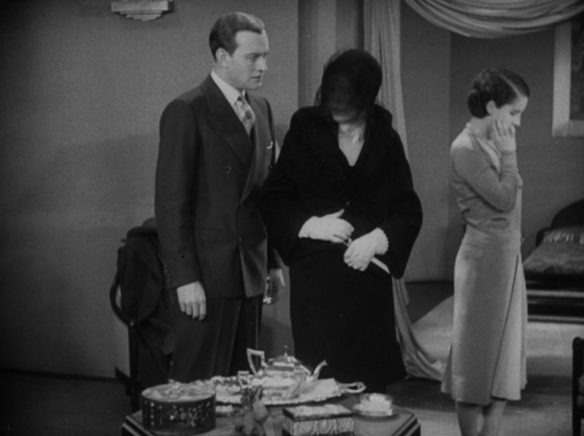
But—and this is why I chose The Divorcée for my last post of 2012—we can all learn not to turn our backs on the past.
And, when we do look back, we shouldn’t look back with smugness and condescension, like I wanted to when I put this movie on. This year, I’ve met a lot of lovely people who cherish old movies like I do. However, I’ve noticed a lot of old movie bashing and bristled at different enunciations of the idea that we know better now than they did then.

Messy streamers in the first of The Divorcée’s two New Year’s scenes suggest that the connections between people never get fully severed. Just tangled up.
As Faulkner wrote, “The past isn’t dead. It isn’t even past.” The past always comes back. It wears a veil, no doubt, but only idiots choose not to look at it. The past comes to us and tells us things that we don’t want to hear, things that we often chose to denigrate rather than decipher.
Well, guess what? Someday we’ll all be past—and a new crop of urbane scoffers will assess us.

Paul catches a glimpse into Jerry’s train compartment. Fate intervenes to bring the past back to him and to Jerry.
We shouldn’t always look back in fondness. Sometimes we need to look back in anger. But, always, always, we need to look back with receptiveness and a little holy dread.

So watch this movie. For the wisecracks, the shocks, the clothes, the feminist overtones. Whatever. But watch it.
Watch an old movie you want to discredit. Watch it and it might astonish you. I hope it does. It may not. But don’t sneer at it before you’ve given it a chance.
That’s why I watch old movies. Because I enjoy looking back. Because I like learning from and laughing with the past. Because I like remembering, even when it’s painful to remember.
Because someone damn well needs to.
Take this curtain, for instance, which shows up in the first of The Divorcée’s New Year’s scenes. You only see it for a few seconds:

But I recognized that curtain! I’d seen it in the 1927 M-G-M silent, Mr. Wu. I wrote my thesis on it!

There’s nothing new under the sun. But that’s no excuse not to look at what gets recycled, at what we keep, at what we remember.
Should old acquaintance be forgot? Not on my watch.

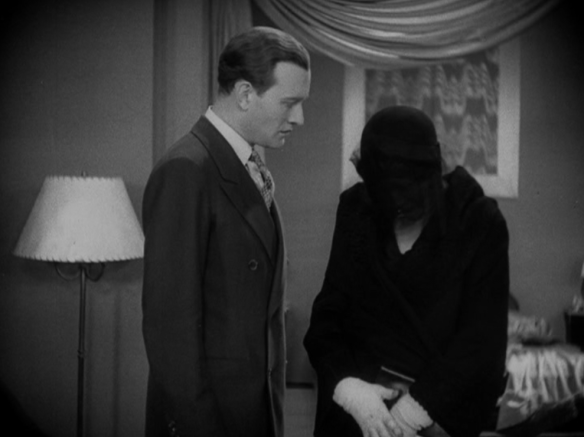
The Divorcee is a flawed but wonderful film – like you, it took me time to fully appreciate this one, to get beyond the staginess and see how modern, and even explicit it is – even for now.
Have you or anyone else had any luck getting ahold of the original novel, “Ex-Wife”? I understand it’s very different from the final film – that Shearer and MGM’s take is more feminist and less debasing to the main character.
This is the most interesting analysis of this movie I’ve ever seen. I think you bring in a lot of insight that others have missed. I’m thinking in particular of Mick LaSalle’s “Complicated Women,” in which he seemed to take Jerry’s post-divorce partying at face value as some kind of liberated, great fun time for the character–when all the time she was just a woman with a broken heart. She doesn’t even seem to sleep with as many men as one might think; she’s always putting those sauve European would-be lovers off with all-too-knowing ironic comments (see all those “hand” scenes). It’s inevitable and entirely realistic that she wants to go back to her ex in the end, and the viewer can only hope the two have learned enough to do it right the next time around (yes, I remain skeptical, but that’s beside the point. I see couples like this every day; why doesn’t?)
“That’s why I watch old movies. Because I enjoy looking back. Because I like learning from and laughing with the past. Because I like remembering, even when it’s painful to remember.”
– Amen.
I watched The Divorcee for the first time today. I liked it, like many other old movies, because it shows how humans today are not much different from then. We still live, love and lust in the same ways. We make mistakes, lie, cheat, and try to rewind time to make it all okay again and return to the happiness we had at some moment before. It’s both wonderful and painful to watch.
I dislike the ending at first, but I think you make several good points in this post and you really made me think about it from a different angle. Thank you. =)
I really enjoyed this review and the movie! Norma Sherer is fresh and smooth through each scene.
A great review. I admit I didn’t like the ending, but your take on it makes me want to revisit.
Pingback: The Divorcee (1930) Review, with Norma Shearer, Chester Morris, Conrad Nagel, and Robert Montgomery – Pre-Code.Com